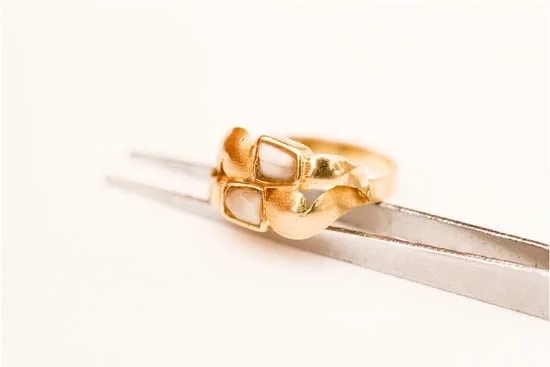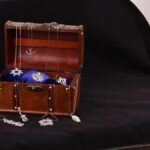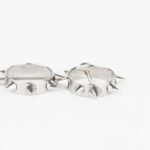What is considered to be fine jewelry? The term “fine jewelry” encompasses a category of luxury items that are distinct from costume or fashion jewelry. Fine jewelry is crafted with high-quality materials and exquisite artisanship, often incorporating precious metals and gemstones. In this article, we will explore the world of fine jewelry, delving into its history, materials used, significance in different cultures, and how to identify authentic pieces.
The allure of fine jewelry transcends time and cultural boundaries. Its craftsmanship reflects the skill of artisans who have honed their techniques over centuries, resulting in timeless pieces that hold both aesthetic and intrinsic value. From stunning diamond necklaces to elegant gold bracelets, fine jewelry captures the essence of sophistication and elegance.
Throughout history, fine jewelry has been worn as a symbol of wealth, status, and personal adornment. The stories behind famous pieces of fine jewelry offer glimpses into the lives of royalty, celebrities, and historical figures. Understanding what sets fine jewelry apart from fashion accessories is essential for those seeking to invest in quality pieces that will stand the test of time. Join us as we embark on a journey through the fascinating world of fine jewelry.
The History of Fine Jewelry
Fine jewelry has been a significant part of human civilization for centuries, with a rich history and cultural significance. Understanding the history of fine jewelry provides valuable insight into its evolution and the role it plays in different cultures. From ancient civilizations to modern times, the art of creating fine jewelry has evolved, reflecting changes in society, technology, and fashion trends.
Ancient Civilizations
The history of fine jewelry dates back to ancient civilizations such as Egypt, Mesopotamia, Greece, and Rome. In these early societies, jewelry was not only used for adornment but also served as a symbol of status, wealth, and power. Precious metals like gold and silver were highly sought after and meticulously crafted into intricate pieces that were worn by royalty and the elite. Gemstones such as emeralds, rubies, sapphires, and diamonds were also prized for their rarity and beauty.
The Renaissance Period
During the Renaissance period in Europe, fine jewelry experienced a resurgence as artistry and craftsmanship flourished. Intricate designs inspired by nature, mythology, and religious symbols became popular among the upper class. The use of colored gemstones became more prevalent alongside advancements in cutting techniques that enhanced their brilliance.
Art Deco Era to Modern Times
In the 20th century, the Art Deco movement influenced fine jewelry design with its geometric shapes, bold colors, and emphasis on symmetry. As technological advancements allowed for more creative freedom in jewelry making, new materials such as platinum and titanium gained popularity. Today, fine jewelry continues to evolve with contemporary designs that cater to diverse tastes and lifestyles.
Understanding the historical significance of fine jewelry provides insight into its enduring appeal and timeless allure across different cultures. Through centuries of innovation and creativity, fine jewelry has remained a cherished form of self-expression and personal adornment.
Materials Used in Fine Jewelry
Fine jewelry is often made from high-quality materials, such as precious metals like gold, silver, and platinum. These metals are valued for their durability and timeless beauty, making them ideal for creating fine jewelry pieces that can be passed down through generations. Additionally, gemstones such as diamonds, rubies, sapphires, and emeralds are commonly used in fine jewelry to add color, sparkle, and value to the piece.
One of the most iconic materials used in fine jewelry is gold. Gold is known for its luster and rarity, with 24-karat gold being the purest form. However, due to its softness, it is often alloyed with other metals like copper or silver to increase its strength and durability. This results in different gold karats such as 18k, 14k, or 10k which indicate the purity of the gold in the piece.
In addition to traditional metals and gemstones, fine jewelry may also feature pearls, jade, coral, or other organic materials. These natural materials add a unique touch to fine jewelry pieces and are often highly prized for their distinctiveness. When considering what is considered to be fine jewelry, it is important to remember that the quality of materials used plays a significant role in defining a piece as “fine”.
| Materials Used | Description |
|---|---|
| Precious Metals (Gold, Silver) | Durable and valued for their timeless beauty |
| Gemstones (Diamonds, Rubies) | Add color, sparkle, and value to the piece |
| Other Organic Materials (Pearls, Jade) | Add uniqueness to fine jewelry pieces |
The Difference Between Fine Jewelry and Fashion Jewelry
Fine jewelry is often distinguished from fashion jewelry by its high quality and the use of precious metals and gemstones. In this section, we will explore the key differences between fine jewelry and fashion jewelry, as well as what sets them apart in terms of value, craftsmanship, and materials.
Quality and Materials
One of the primary distinctions between fine jewelry and fashion jewelry lies in the materials used to create each. Fine jewelry is typically crafted from high-quality materials such as gold, platinum, and sterling silver, often accompanied by precious gemstones such as diamonds, rubies, sapphires, and emeralds. These materials are valued for their durability and rarity. On the other hand, fashion jewelry is often made with less expensive materials such as base metals, glass beads, plastic, or synthetic gemstones.
Craftsmanship
The craftsmanship involved in creating fine jewelry sets it apart from fashion jewelry. Fine jewelry pieces are meticulously designed and crafted by skilled artisans who pay attention to detail and precision.
The setting of gemstones in fine jewelry is often done using techniques that enhance both the beauty and longevity of the piece. In contrast, fashion jewelry is usually mass-produced using machinery or low-skilled labor, resulting in pieces that may lack the intricate details and lasting quality associated with fine jewelry.
Value and Longevity
Ultimately, what distinguishes fine jewelry from fashion jewelry is its value and longevity. Fine jewelry pieces are considered investments due to their enduring quality and the intrinsic value of their materials. They can be passed down through generations as heirlooms.
In contrast, fashion jewelry may be more trend-focused, designed to complement specific outfits or styles without the expectation of lasting for years to come. When considering what is considered to be fine jewelry versus fashion jewelry, it’s important to weigh factors such as material quality, craftsmanship, and potential long-term value.
By understanding these differences between fine jewelry and fashion jewelry, consumers can make informed choices when adding pieces to their collections or looking for special gifts that will hold sentimental meaning for years to come.
How to Identify Authentic Fine Jewelry
When it comes to determining what is considered to be fine jewelry, authenticity is a key factor. Authentic fine jewelry is made from high-quality materials and crafted with precision and care. Identifying authentic fine jewelry involves examining several aspects of the piece, from the materials used to the craftsmanship involved.
One way to identify authentic fine jewelry is by looking at the hallmark or stamp on the piece. In many countries, fine jewelry must be stamped with a symbol that indicates the purity of the metal used, such as 18K or 925 for gold and sterling silver, respectively. Additionally, reputable jewelry designers often have their own signature stamp on their pieces, indicating authenticity and quality.
Another important aspect in identifying authentic fine jewelry is examining the gemstones used in the piece. Fine jewelry often features precious stones such as diamonds, rubies, sapphires, and emeralds. These stones should be natural and untreated, without any artificial enhancements that lower their value.
The craftsmanship of a piece also plays a crucial role in identifying authentic fine jewelry. Fine jewelry is expertly crafted with attention to detail, precision, and high-quality finishing. Each component of the piece should be well-made and sturdy, showcasing the skill and expertise of the jeweler. By considering these factors, one can confidently determine whether a piece of jewelry is indeed considered authentic fine jewelry or not.
The Significance of Fine Jewelry in Different Cultures
Fine jewelry holds a special significance in various cultures around the world. It is not just a fashion statement, but also represents tradition, status, and sometimes even spiritual beliefs. Here are some examples of how fine jewelry is significant in different cultures:
- In Indian culture, gold is considered to be an auspicious metal and holds great cultural and religious significance. Fine jewelry made of gold is often worn during weddings, festivals, and other important ceremonies as a symbol of prosperity and good fortune.
- In Chinese culture, jade is highly valued and holds spiritual meaning. Jade fine jewelry is believed to bring good luck, protect the wearer from harm, and promote balance and harmony. It is often passed down through generations as a family heirloom.
- In African culture, beaded fine jewelry is widely used for adornment and also as a representation of tribal identity and traditions. Different patterns and colors of beads may indicate the wearer’s tribe, social status, or even marital status.
Each culture has its own unique customs and beliefs regarding fine jewelry, making it an integral part of their heritage and identity.
The wearing of fine jewelry in different cultures also reflects societal norms and values. For example, elaborate fine jewelry might signify wealth and high social standing in some cultures, while in others it may serve as a form of protection or a way to connect with one’s roots. Understanding the significance of fine jewelry in different cultures helps us appreciate its importance beyond just aesthetic appeal.
Overall, the significance of fine jewelry in different cultures serves as a reminder that it is more than just valuable accessories – it carries deep historical, cultural, and personal meaning for people around the world.
Famous Fine Jewelry Pieces and Their Stories
Fine jewelry holds a special place in the hearts of many, partly due to the unforgettable stories behind some of the most famous pieces. One such example is the Hope Diamond, known for its rare deep blue color and storied past.
Believed to have originated in India, this diamond has passed through the hands of numerous owners, each with their own tale to tell. From being stolen during the French Revolution to being donated to the Smithsonian Institution by Harry Winston, the Hope Diamond continues to captivate people around the world.
Another iconic piece of fine jewelry is the Taylor-Burton Diamond, a 69-carat pear-shaped diamond acquired by Richard Burton for Elizabeth Taylor in 1969. The diamond’s remarkable size and exquisite shape made it one of the most unique pieces in her extensive jewelry collection. In fact, it was worn by Taylor as part of a necklace and was famously put up for auction after her passing in 2011.
Additionally, many are familiar with the heart-shaped Taj Mahal diamond gifted to Queen Mumtaz Mahal from her husband Shah Jahan during their enduring love story. This stunning white diamond holds sentimental value not only due to its rich history but also because it symbolizes an everlasting love that transcends time and tradition.
As evidenced by these examples, famous fine jewelry pieces not only represent exceptional craftsmanship but also embody compelling narratives that continue to resonate with admirers worldwide.
| Fine Jewelry Piece | Story Behind It |
|---|---|
| The Hope Diamond | Stolen during French Revolution; donated to Smithsonian Institution |
| The Taylor-Burton Diamond | Acquired by Richard Burton for Elizabeth Taylor; put up for auction after her passing |
| Taj Mahal Diamond | Gifted by Shah Jahan to Queen Mumtaz Mahal; symbolizes enduring love |
Tips for Caring for Fine Jewelry
Caring for fine jewelry is essential to maintain its beauty and quality. Proper care can help preserve the value of these precious pieces and ensure that they last for generations. There are several tips and techniques that can be used to care for fine jewelry, regardless of the materials used in their creation.
One tip for caring for fine jewelry is to regularly clean and inspect the pieces. This can be done at home using simple cleaning solutions or by taking them to a professional jeweler. Regular cleaning can help remove dirt, oils, and other substances that may dull the shine of the jewelry or cause damage over time. Additionally, inspecting the pieces regularly can help identify any loose stones or clasps that may need to be repaired.
Another important aspect of caring for fine jewelry is proper storage. Storing fine jewelry in a safe place, such as a jewelry box with individual compartments or a soft pouch, can prevent scratches and tangles. It is also recommended to keep fine jewelry away from extreme temperatures and sunlight to avoid damage.
Lastly, avoiding contact with harsh chemicals and activities that may cause damage is crucial in caring for fine jewelry. Fine jewelry should be removed before swimming, exercising, or using household cleaners to prevent exposure to chemicals that may tarnish or corrode the metals and gemstones.
Overall, caring for fine jewelry involves regular cleaning and inspection, proper storage, and taking precautions to avoid damage. By following these tips, owners can maintain the timeless beauty and quality of their precious pieces for years to come.
Investing in Fine Jewelry
When considering whether investing in fine jewelry is worth it, there are several factors to take into account. Here are some reasons why fine jewelry can be a valuable investment:
1. Intrinsic Value: Fine jewelry is often made from precious materials such as gold, platinum, and diamonds, which have inherent value. These materials can retain their worth over time, making fine jewelry a tangible asset that can potentially appreciate in value.
2. Timeless Appeal: Unlike fashion jewelry, which may go out of style quickly, fine jewelry has a timeless appeal. Pieces such as diamond stud earrings or a simple gold necklace can be passed down through generations and remain highly sought after regardless of changing trends.
3. Cultural Significance: Fine jewelry often holds cultural or sentimental significance, adding to its value. For example, heirloom pieces passed down within families hold both emotional and historical significance, making them irreplaceable and valuable.
It’s important to note that investing in fine jewelry requires careful consideration and research. Factors such as the reputation of the jeweler, the quality of materials used, and current market trends should all be taken into account when considering an investment in fine jewelry.
Ultimately, whether or not investing in fine jewelry is worth it depends on individual preferences and financial goals. Some may view fine jewelry primarily as a luxury item or symbol of status, while others may see it as a potential long-term investment with both monetary and sentimental value.
Conclusion
When it comes to answering the question “what is considered to be fine jewelry,” there are several factors to take into consideration. Fine jewelry, as we have seen throughout this article, encompasses a rich history, the use of precious materials, and a level of craftsmanship that sets it apart from fashion jewelry. The distinction between fine and fashion jewelry lies not only in the quality and value of the pieces but also in their durability and timeless appeal.
The enduring allure of fine jewelry is evident in its significance across different cultures and its ability to capture memorable moments. Whether it’s an engagement ring symbolizing love and commitment or a family heirloom passed down through generations, fine jewelry holds a special place in people’s hearts. The stories behind famous pieces such as the Hope Diamond or the Elizabeth Taylor Collection further showcase the timeless beauty and allure of fine jewelry.
In conclusion, investing in fine jewelry is not just about owning a valuable asset; it’s about acquiring something with intrinsic beauty and cultural significance. As we have explored in this article, understanding what is considered to be fine jewelry involves recognizing its history, craftsmanship, materials, cultural importance, and care required to maintain its luster. Ultimately, fine jewelry represents an enduring legacy that transcends generations and continues to hold a special place in our lives.
Frequently Asked Questions
What Qualifies as Fine Jewelry?
Fine jewelry is typically made from high-quality materials such as precious metals like gold, platinum, or silver, and adorned with genuine gemstones like diamonds, rubies, sapphires, and emeralds. These pieces are often expertly crafted by skilled artisans and are known for their durability, timeless designs, and significant monetary value.
What Is an Example of Fine Jewelry?
An example of fine jewelry would be a 14k gold necklace featuring a sparkling diamond pendant. Another example could be a pair of earrings made of platinum and set with vibrant emeralds. Both examples showcase the use of high-quality materials and genuine gemstones, reflecting the characteristics of fine jewelry.
How Can You Tell if Jewelry Is Fine?
There are several ways to determine if jewelry is considered fine. First, it’s important to look for hallmarks on the piece that indicate the purity of the metal used, such as “14k” or “925” for gold and sterling silver respectively.
Additionally, inspecting any gemstones for authenticity and quality is crucial – genuine diamonds should have certifications from reputable gemological institutes like GIA or AGS. Finally, examining the craftsmanship and overall design of the jewelry can also provide insight into its classification as fine jewelry.

Welcome to my jewelry blog! My name is Sarah and I am the owner of this blog.
I love making jewelry and sharing my creations with others.
So whether you’re someone who loves wearing jewelry yourself or simply enjoys learning about it, be sure to check out my blog for insightful posts on everything related to this exciting topic!





